
The machine learning algorithm only accepts numerical input, so if we encounter categorical features, we will encode the categorical features. This article summarizes 11 common categorical variable encoding methods.

The most popular and commonly used encoding method is One Hot Enoding. A single variable with n observations and d distinct values is converted into d binary variables with n observations, each binary variable is identified by a bit (0, 1).
For example:

After encoding
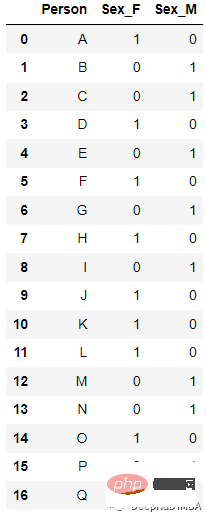
new_df=pd.get_dummies(columns=[‘Sex’], data=df)

from sklearn.preprocessing import LabelEncoder le=LabelEncoder() df[‘Sex’]=le.fit_transform(df[‘Sex’])

##
from sklearn.preprocessing import LabelBinarizer lb = LabelBinarizer() new_df[‘Sex’]=lb.fit_transform(df[‘Sex’])
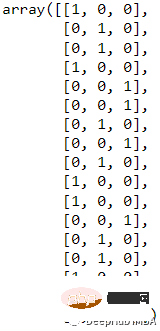 4. Leave one out Encoding
4. Leave one out Encoding Specific values of specific categorical variables are coded as follows.
ci = (Σj != i tj / (n — 1 + R)) x (1 + εi) where ci = encoded value for ith record tj = target variable value for jth record n = number of records with the same categorical variable value R = regularization factor εi = zero mean random variable with normal distribution N(0, s)
For example, the following data:
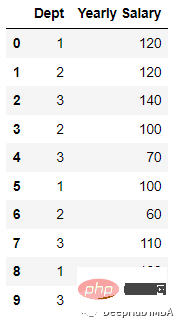 After encoding:
After encoding:
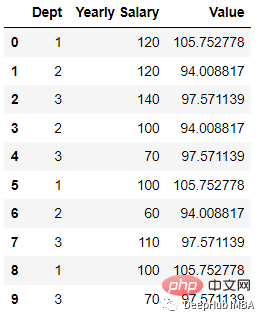 To demonstrate this encoding process , we create the data set:
To demonstrate this encoding process , we create the data set:
import pandas as pd; data = [[‘1’, 120], [‘2’, 120], [‘3’, 140], [‘2’, 100], [‘3’, 70], [‘1’, 100],[‘2’, 60], [‘3’, 110], [‘1’, 100],[‘3’, 70] ] df = pd.DataFrame(data, columns = [‘Dept’,’Yearly Salary’])
and then encode:
import category_encoders as ce
tenc=ce.TargetEncoder()
df_dep=tenc.fit_transform(df[‘Dept’],df[‘Yearly Salary’])
df_dep=df_dep.rename({‘Dept’:’Value’}, axis=1)
df_new = df.join(df_dep)This way we get the above result.
5. Hashing
For example, the following data:
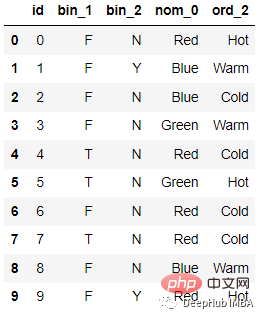 After encoding
After encoding
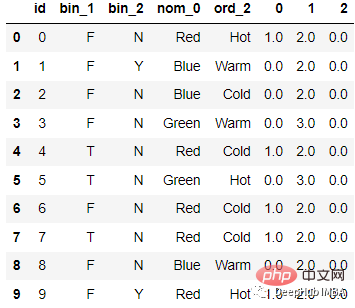 The code is as follows:
The code is as follows:
from sklearn.feature_extraction import FeatureHasher # n_features contains the number of bits you want in your hash value. h = FeatureHasher(n_features = 3, input_type =’string’) # transforming the column after fitting hashed_Feature = h.fit_transform(df[‘nom_0’]) hashed_Feature = hashed_Feature.toarray() df = pd.concat([df, pd.DataFrame(hashed_Feature)], axis = 1) df.head(10)
6. Weight of Evidence Encoding
 If P(Goods) / P(Bads) = 1, then WoE is 0. If the outcome for this group is random, then P(Bads) > P(Goods), the odds ratio is 1, and the weight of evidence (WoE) is 0. If P(Goods) > P(bad) in a group, then WoE is greater than 0.
If P(Goods) / P(Bads) = 1, then WoE is 0. If the outcome for this group is random, then P(Bads) > P(Goods), the odds ratio is 1, and the weight of evidence (WoE) is 0. If P(Goods) > P(bad) in a group, then WoE is greater than 0.
因为Logit转换只是概率的对数,或ln(P(Goods)/P(bad)),所以WoE非常适合于逻辑回归。当在逻辑回归中使用wo编码的预测因子时,预测因子被处理成与编码到相同的尺度,这样可以直接比较线性逻辑回归方程中的变量。
例如下面的数据
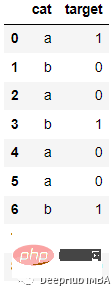
会被编码为:

代码如下:
from category_encoders import WOEEncoder
df = pd.DataFrame({‘cat’: [‘a’, ‘b’, ‘a’, ‘b’, ‘a’, ‘a’, ‘b’, ‘c’, ‘c’], ‘target’: [1, 0, 0, 1, 0, 0, 1, 1, 0]})
woe = WOEEncoder(cols=[‘cat’], random_state=42)
X = df[‘cat’]
y = df.target
encoded_df = woe.fit_transform(X, y)Helmert Encoding将一个级别的因变量的平均值与该编码中所有先前水平的因变量的平均值进行比较。
反向 Helmert 编码是类别编码器中变体的另一个名称。它将因变量的特定水平平均值与其所有先前水平的水平的平均值进行比较。
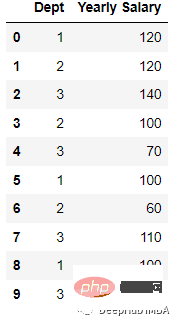
会被编码为
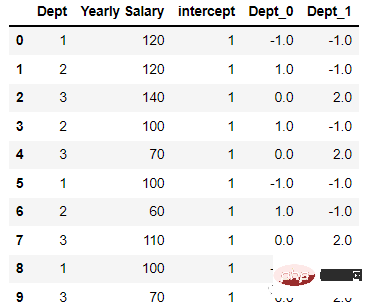
代码如下:
import category_encoders as ce encoder=ce.HelmertEncoder(cols=’Dept’) new_df=encoder.fit_transform(df[‘Dept’]) new_hdf=pd.concat([df,new_df], axis=1) new_hdf
是CatBoost编码器试图解决的是目标泄漏问题,除了目标编码外,还使用了一个排序概念。它的工作原理与时间序列数据验证类似。当前特征的目标概率仅从它之前的行(观测值)计算,这意味着目标统计值依赖于观测历史。

TargetCount:某个类别特性的目标值的总和(到当前为止)。
Prior:它的值是恒定的,用(数据集中的观察总数(即行))/(整个数据集中的目标值之和)表示。
featucalculate:到目前为止已经看到的、具有与此相同值的分类特征的总数。
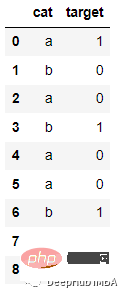
编码后的结果如下:
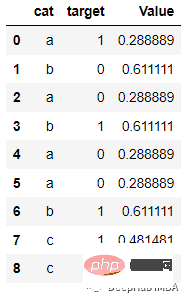
代码:
import category_encoders category_encoders.cat_boost.CatBoostEncoder(verbose=0, cols=None, drop_invariant=False, return_df=True, handle_unknown=’value’, handle_missing=’value’, random_state=None, sigma=None, a=1) target = df[[‘target’]] train = df.drop(‘target’, axis = 1) # Define catboost encoder cbe_encoder = ce.cat_boost.CatBoostEncoder() # Fit encoder and transform the features cbe_encoder.fit(train, target) train_cbe = cbe_encoder.transform(train)
James-Stein 为特征值提供以下加权平均值:
James-Stein 编码器将平均值缩小到全局的平均值。该编码器是基于目标的。但是James-Stein 估计器有缺点:它只支持正态分布。
它只能在给定正态分布的情况下定义(实时情况并非如此)。为了防止这种情况,我们可以使用 beta 分布或使用对数-比值比转换二元目标,就像在 WOE 编码器中所做的那样(默认使用它,因为它很简单)。
Target Encoder的一个更直接的变体是M Estimator Encoding。它只包含一个超参数m,它代表正则化幂。m值越大收缩越强。建议m的取值范围为1 ~ 100。
Sum Encoder将类别列的特定级别的因变量(目标)的平均值与目标的总体平均值进行比较。在线性回归(LR)的模型中,Sum Encoder和ONE HOT ENCODING都是常用的方法。两种模型对LR系数的解释是不同的,Sum Encoder模型的截距代表了总体平均值(在所有条件下),而系数很容易被理解为主要效应。在OHE模型中,截距代表基线条件的平均值,系数代表简单效应(一个特定条件与基线之间的差)。
最后,在编码中我们用到了一个非常好用的Python包 “category-encoders”它还提供了其他的编码方法,如果你对他感兴趣,请查看它的官方文档:
http://contrib.scikit-learn.org/category_encoders/
The above is the detailed content of 11 common classification feature encoding techniques. For more information, please follow other related articles on the PHP Chinese website!
 Page replacement algorithm
Page replacement algorithm
 Common coding methods
Common coding methods
 Comparative analysis of iqooneo8 and iqooneo9
Comparative analysis of iqooneo8 and iqooneo9
 0x80070002 solution
0x80070002 solution
 Do you know if you cancel the other person immediately after following them on Douyin?
Do you know if you cancel the other person immediately after following them on Douyin?
 What does ps mask mean?
What does ps mask mean?
 Why can't win11 be installed?
Why can't win11 be installed?
 The latest ranking of the top ten exchanges in the currency circle
The latest ranking of the top ten exchanges in the currency circle




